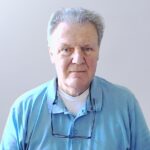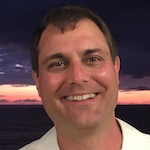Highly Reliable: How Process Makes Perfect
Before Global Positioning Systems (GPS) and software like Google Maps, the only way to navigate the world was with paper maps and atlases. Now, with GPS and apps on your phone, you can find any address, the directions for getting there and the time it will take in a moment. In the past, you had to read a map or rely on someone to guide you in the right direction.
At ASG, we know how to read the maps. We also tap into knowledge that can make the journey from point A to point B more efficient. We help our clients streamline systems, do more with less and troubleshoot issues by doing the right work with the right people at the right time. Robust processes are one of the sharpest tools in our toolbox.
The power of processes
At ASG, we immerse ourselves in our clients’ culture and existing processes, then adapt business and technical processes to make it easier to bring new products to market. The way we work can also help build highly reliable organizations.

“Using the right process for the right project leads to valid and accurate results and efficient implementation,” said Kevin Carnes, a senior consultant at ASG. “Processes support the validity of the work performed and allow you to retrace steps if there are problems or challenges. They help the entire team see the big picture, so people can arrange or combine tasks and be done in less time.”

Processes also help control chaos by giving teams a guide for how to perform a specific task or action, said Katie Krock, ASG operations manager, scheduler and cost controller. “Processes can be even more important than giving direction,” Krock said. “They help ensure that every time we do a specific thing, we do it the same way. That allows us to use data and measure our performance over time.”

“Every project has variability. One of the key aspects of a good process is being able to know where you went out of control. If you can get a timeline of where you stopped being in control, discovering the real issue becomes that much easier,” said James Lawrence, a technical consultant at ASG.
The backbone of every project
Processes create efficiencies and structure throughout a project’s lifespan.

“Regardless of the stage of a product’s production cycle, processes can be helpful, but they’re especially needed in the beginning,” said Mike Dulchinos, a technical consultant at ASG. “For example, processes allow you to track steps of a prototype to see where it has worked on past models and what has gone wrong,” Dulchinos said.
Processes also can help you figure out a system for reaching your goals. “With a good process in place, you can take a finished design, look at the amount needed for production and a client’s timeline and say, ‘Your capital allocated says that isn’t possible; here’s why,’” Dulchinos said. “It also allows us to go to our clients and say: ‘Here’s how we can increase efficiency.’”
The human factor
When an ASG team member joins a project, clients gain more than just one person; they gain that employee’s experience as well as the experience of everyone at ASG. We’ve developed conceptual models, practices and tools over 40 years. Medical device experts, engineers and mentors have shared knowledge that we leverage to find solutions for our clients.

Each ASG team member, whether new to the field or a veteran of the medical device industry, focuses on applying technical knowledge to the current situation. When projects require it, ASG adds resources. “I’m always trying to understand who the key stakeholders are and what everyone’s skills are so we can tailor the application of a process based on the resources available,” said Zach Labens, a materials manager at ASG.

“Every ASG team member has a strong engineering foundation and high adaptability, which are the skills we look for when hiring,” said Julia Le, a systems engineer and technical project manager at ASG. Once they’re on board, team members continue to improve. The key to a smooth onboarding requires an understanding of the processes in use as well as good communication to meet the team where they are.
“Everyone starts with fundamental technical knowledge and capabilities that we can adapt to the standard or process of our clients,” Le said. “With our experience and skills, we can help identify a pain point, work with the client to find a solution, and, if needed, improve the current process to better fit the client’s needs.”

Soft skills are an important part of ASG’s formula for success. So are experienced team members looking for opportunities to pass on their knowledge to the next generation. Austen Metzger, a technical project manager who has been at ASG for almost eight years, believes in sharing his experience with clients. “When we use our experience and knowledge to create and improve processes, we can deliver solutions faster and be dependable support to our teams and clients,” Metzger said.

The plans we create from our processes allow for clarity in interactions between our clients and team members. This ensures clear coordination and appropriate ownership. It also allows for a lean manufacturing process, which can be more agile or responsive to changing needs.
ASG Principal and Senior Consultant Doug Koeneman says that this allows ASG to do more than deliver results. “It allows us to be transformative,” Koeneman said. “In the end, projects require people to work together to achieve a common goal; the best plan is the one they understand.”
At ASG, our passion is helping medical device companies transform through processes, structure and the power of people. Doing this, while advocating for our clients and thinking differently, allows us to create beneficial lasting relationships. Learn more about who we are and how we do it.






